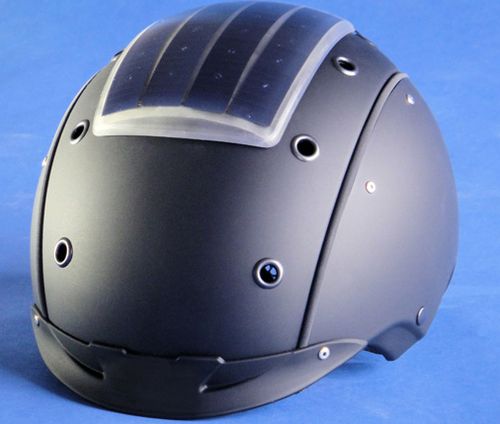
There was a time when the ski resort experience was not punctuated by the sound of ringtones and “hey, is my GoPro on?” But those days are gone forever. You may or may not lament this. But our desire to take technology with us when we go outside has led to considerable R&D in the area of energy harvesting and wearable technology.
One result of this is a helmet with an embedded solar panel. It's the result of a breakthrough at╠ř, a German firm that develops new ways to package and produce technologies. In this case, the company found a way to mount small╠řmonocrystalline silicon solar cells on a three-dimensional curved surface without significantly losing the cell's efficiency (its ability to generate power from sunlight).╠ř
The power is stored in a battery pack that powers headphones and a mic, all of which are integrated into the helmet. The user wears a glove with an integrate display, controls and battery. This links wirelessly to the helmet, and the helmet uses a Bluetooth link to communicate with the user's phone. Yes, we are becoming cyborgs.╠ř
The company is partnering with German╠ř, which specializes in wearable technology for outdoor sports,╠řto bring the helmet to the European market by the end of the year. ItÔÇÖs expected to retail for ÔéČ300 (around $400). While the helmet won't power your phone as you're screaming down a black diamond, you can pull the power from the battery to the phone once you remove the helmet to enjoy an apr├Ęs ski drink.
But here's the more intriguing thing: Fraunhofer IZM spokesperson Georg Weigelt told me that the ability to mount solar on curved surfaces without degrading performance opens up all kinds of other applications, and many of these fall directly in the realm of outdoor sports. Solar panels could be mounted on bike frames, or other types of helmets, or backpacks or tents. This could make it easier to generate and store power during long expeditions, without relying on generators or having to find grid connections. The panels can also power devices directly, even at extremely low temperatures (down to -60 degrees C) where batteries fail.
It's just one part of a larger effort to harvest power from renewable sources (the sun, , wind, wave action, etc.) for outdoor pursuits.╠ř
–Mary Catherine O'Connor
╠ř